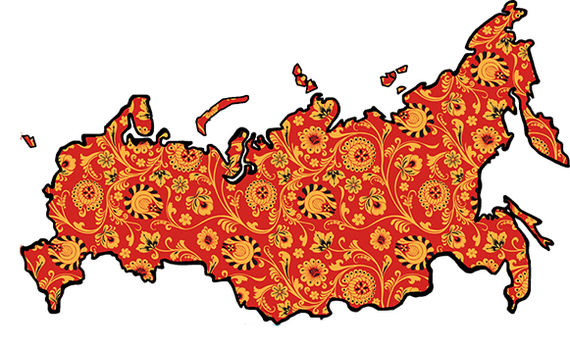
September 3, 2013 was a tipping point in Armenia's foreign policy. Following an official visit to Moscow, the country’s president Serzh Sargsyan unexpectedly announced that Armenia would be joining the Russian-led and yet-to-be-formed Eurasian Economic Union (EEU).
This statement was a surprise and disappointment for many at the time. The country had been negotiating an Association Agreement (AA) and a Deep and Comprehensive Free Trade Agreement (DCFTA) with the European Union for around four years and the negotiations had officially concluded in July that year. This sudden U-turn came as a shock because the agreement with the EU was expected to be signed at the Eastern Partnership (EaP) Vilnius Summit in November, 2013. In retrospect, the surprise and disappointment were misplaced taking into consideration Russia’s influence in the region and specifically in Armenia, caused by many factors, such as shared history, connections, migration flows, security issues, and most importantly economic links.
Among the Eastern Partnership countries, Ukraine was also negotiating the AA and DCFTA with the EU at the time. However, under Russian pressure, Ukraine’s then President Viktor Yanukovich refused to sign the deal just before the summit. This spurred mass protests in the country as the population was divided into pro-European and pro-Russian camps; Yanukovich eventually fled the country. Ukraine’s current president Petro Poroshenko signed the AA and DCFTA two years later in 2014. This did not solve the internal conflict in Ukraine and as clashes continue, the country remains divided.
While the collapse of the EU-Armenia agreement was a failure for both sides, it resulted in addressing the issue of “red lines.” From the very beginning of the bilateral negotiations, the question of security was never addressed in any EU-Armenia document, including the AA. This was a serious issue taking into consideration that Armenia is a security dependent country. On the other hand, it also solved the issue of a lack of information and visibility, as it raised the interest among many layers of the country’s population. And the gap between the EU’s expectations and Armenia’s aspirations called for a more transparent approach from both sides. Armenian society was never privy to sufficient information regarding the areas and platforms of bilateral cooperation, the large amount of funding received from the EU (€281.5 million for bilateral assistance to Armenia under the ENPI for the period 2007-2013 and €140-170 million granted for the period 2014-2017) or the opportunities available for Armenia (a wide range of programs and projects on democratic development and good governance, civil society capacity building and participation, vocational education and training as well as agriculture and nuclear safety).
Finally, September 3, 2013 was a culmination point, which afforded both sides an opportunity to reflect on the “dos and don’ts” of bilateral relations and resulted in lessons learned.
While Armenia-EU relations sputtered, in early 2015, Armenia officially joined the Eurasian Economic Union, which included Russia, Belarus and Kazakhstan (Kyrgyzstan joined the union in August, 2015). The Union membership has been a priority of Armenia’s foreign policy line since then.
However, over the last several years, official Yerevan has stated its willingness for a balanced foreign policy approach, which led to a new Comprehensive and Enhanced Partnership Agreement (CEPA) with the European Union. It is expected that the agreement will be signed during the European Partnership (EaP) Summit in Brussels in November 2017.
The New Agreement and What It Envisages
The new EU-Armenia agreement reflects the “tailor-made partnerships with neighbouring countries” principle of the EU’s new Global Strategy as well as the European Neighborhood Policy (ENP) review’s guidance on taking into account the interests of neighbouring countries and is said to encompass most of the provisions from the Association Agreement and some from the DCFTA. The agreement negotiations concluded in February of this year and it was initialed in March.
As a new legal basis for cooperation between the sides, when ratified by all parties, this new comprehensive agreement will be regulating EU-Armenia relations, substituting the existing legal framework for cooperation - the Partnership and Cooperation Agreement (PCA). As stated in CEPA all the “references to the PCA in all other agreements between the Parties shall be construed as referring to this Agreement."

In the meantime, CEPA demonstrates progress in reaching bilateral flexibility, transparency and mutual respect of interests. Unlike previous documents, CEPA has recently been made public and translated into the 23 official languages of the EU, as an indicator of openness. Having recent history in mind, this is also an attempt by the EU to prevent the potential risk of Armenia backing out of the deal.
The agreement stresses the desire of both parties to move bilateral relations to another level. The fact that a document of around 350 pages has been negotiated and finalized within months shows the acknowledgement from both sides for the urgent need of transferring relations to a new level of cooperation. Armenia’s Foreign Minister Edward Nalbandyan said that "opening a new page" for the EU-Armenia relations, CEPA will be signed "in the course of this year." The EU, for its part, took a big step forward by adopting a flexible approach and changing the usual format of relations with third countries. The EU High Representative for Foreign Affairs and Security Policy and Vice-president of the Council Federica Mogherini said "the EU is ready to support Armenia's reform process across a range of issues, including economic development, the business environment, judiciary, human rights, the fight against corruption" and mentioned "shared values [existing between the sides] as commitment to democracy, human rights, the rule of law, which underpin the new agreement and the future cooperation."
In accordance with the principle of approximation of Armenia's legislation to the EU acquis, the document covers a wide range of areas for bilateral cooperation. These are areas from political dialogue and reform and cooperation in the field of foreign and security policy to migration and asylum, border management, cooperation in areas of transport systems, environment and climate action to research, innovation and education.
CEPA leaves a lot of room for flexibility and interpretation. The agreement might not have the depth of the Deep and Comprehensive Free Trade Agreement of 2013, but it underlines the EU’s flexible approach towards Armenia and respect for the country's sovereign interests.
The EEU membership leaves little room for Armenia to cooperate with third countries. More importantly, an economic union requires integration of economic, monetary and fiscal policies, it requires transmitting a large amount of national sovereignty to a supranational decision-making body. CEPA might not have the wide scope of a free trade agreement (or the DCFTA) but it does touch upon several aspects such as trade and trade related issues, sustainable development, enterprises, competition, subsidies, where it does not contradict Armenia’s agreement with the EEU. The economic cooperation was also included in the agreement and mentions that "the European Union and the Republic of Armenia shall facilitate the process of economic reform by improving shared understanding of the fundamentals of each economy and the formulation and implementation of economic policies." The agreement also touches upon taxation in accordance with General Agreement on Tariffs and Trade (GATT) 1994 agreement and stresses the principles of transparency, exchange of information and fair tax competition.
CEPA is a big step forward, it is a unique example of acknowledgement of the need for moving forward, a flexible and transparent approach and a mutual consideration of interests.
Another point of the agreement worth mentioning is the article on energy security and cooperation in respective areas, which includes civil nuclear sector safety, in accordance with "the specificities of the Republic of Armenia and focusing in particular on high levels of nuclear safety, on the basis of International Atomic Energy Agency (IAEA) standards and standards and practices of the European Union." The agreement mentions the Medzamor nuclear power plant closure as part of the deal on nuclear sector safety, but also leaves room for flexibility mentioning the need for “taking into consideration its replacement with new capacity to ensure the energy security of the Republic of Armenia” as a prerequisite.
In general, CEPA leaves a lot of room for flexibility and interpretation. Being a strong political document the agreement might not have the depth of the Deep and Comprehensive Free Trade Agreement of 2013, but being a new framework for cooperation it underlines the EU’s flexible approach towards Armenia and respect for the country's sovereign interests. At the same time, this is Armenia’s preferred framework and depth of integration, where a balanced foreign policy approach is possible.
Having said this, the agreement has yet received no official opinion from the Russian side, which is notorious for its unpredictability. Although the “light” nature of CEPA and the absence of contradictions with Armenia’s EEU obligations, as well as the publication of the document before signing, reduces the risk of a negative outcome.
CEPA: A Result of Lessons Learned
The present stage of EU-Armenia bilateral relations is formed through complex political, social and economic patterns. In 1999, the first legal framework of cooperation between the two sides, the Partnership and Cooperation Agreement (PCA), entered into force. In 2004 the EU included the three South Caucasus countries (Georgia, Armenia, Azerbaijan) into its new European Neighbourhood Policy (ENP). Under the Neighbourhood policy the country signed the Action plan with the Union. In 2009, the Eastern Partnership was formed as a new platform for cooperation between the EU and six countries of Eastern Europe (Belarus, Moldova, Ukraine) and the South Caucasus. It was in the framework of the partnership that these countries were offered new bilateral agreements with the EU (AAs and DCFTAs) as a new closer stage of relations with the Union.

Offering the EaP member states association agreements created an illusion that these countries are about to start EU membership negotiations. Article 217 of the Lisbon Treaty (TFEU), refers to association agreements as concluded by the Union and its Member States with one or more third countries and "establishes an association involving reciprocal rights and obligations, common action and special procedure.” In case of some Eastern European countries the Association Agreement was the pre-accession agreement. Armenia's refusal to sign the Association Agreement resulted in tension in relations which later turned into a mutual desire to rearrange and re-think the issues.
Having unique issues with all the EaP countries, the project is now emerging into a multi-speed partnership, with agreements like CEPA on the one hand as success stories and countries like Georgia, Ukraine and Moldova that signed the AAs and DCFTAs and striving for more integration on the other. Overcoming the hardships and considering mutual interests of neighbouring countries, the EU developed a new approach of working with the third countries.
Regardless, CEPA is a big step forward, it is a unique example of acknowledgement of the need for moving forward, a flexible and transparent approach and a mutual consideration of interests. In terms of EU-Armenia bilateral relations the document is more realistic and feasible.



